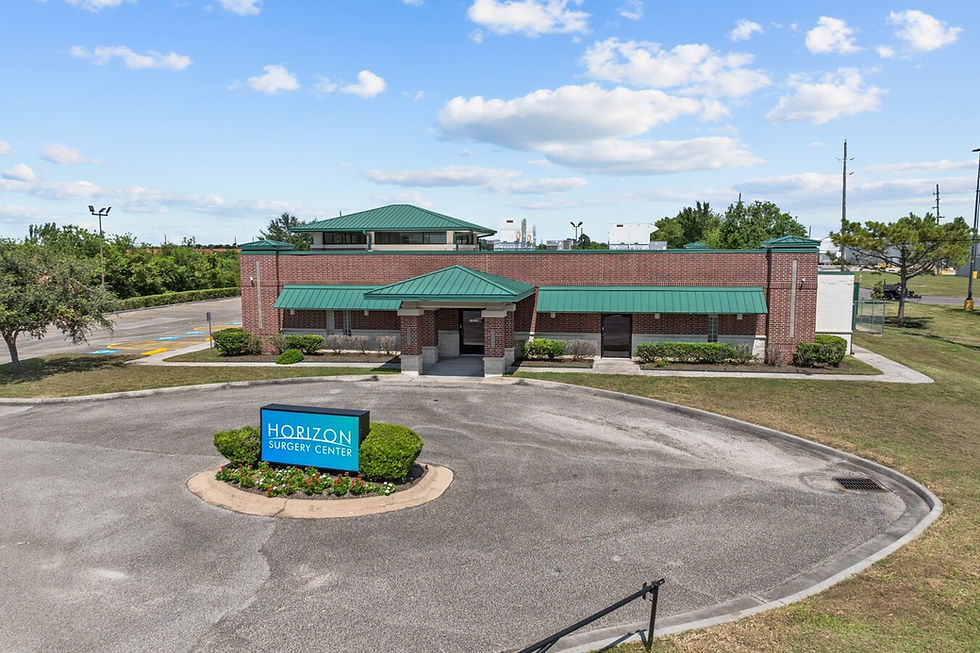The Evolution of Care: From Hospital to Home
- Connor Watson

- Oct 15
- 2 min read

Across the U.S., healthcare delivery is undergoing a structural shift. Hospitals and health systems are moving more procedures and patient interactions out of acute-care campuses and into decentralized, outpatient, and even at-home models. This evolution—driven by cost efficiency, patient preference, and technology—is reshaping how and where care is delivered, and by extension, how medical real estate is valued and deployed.
A recent Becker’s ASC report found that roughly 60% of health system executives are pursuing or exploring joint ventures in ambulatory surgery centers (ASCs). These leaders are investing heavily in hybrid facilities, outpatient hubs, and home-based care programs as part of an integrated continuum that extends beyond the traditional hospital walls.
For real estate investors, this transition represents one of the most significant opportunities of the decade. The demand for smaller, flexible, well-located medical spaces is rising. Properties suited for conversion—such as former offices, strip centers, or ground-floor retail—can be repositioned into outpatient clinics, diagnostic centers, or micro-hospitals. Joint ventures between landlords and health systems are becoming more common, as providers seek to offload capital costs while maintaining control of their operational footprint.
Key Investment Themes:
Outpatient Expansion: Expect continued demand for ASCs, urgent care, and specialty clinics near residential growth corridors.
Conversions & Adaptive Reuse: Underperforming office and retail assets offer prime opportunities for medical repurposing.
Partnership Structures: Health systems and physician groups are increasingly open to creative lease or JV structures with real estate capital.
Technology Integration: Buildings with infrastructure for telehealth, imaging, and remote monitoring will command premium rents.
In Texas—and particularly in fast-growing markets like Austin—this shift is already underway. Developers are exploring smaller footprints, while institutional investors are targeting stable, long-term leases with healthcare operators. As care delivery continues moving closer to the home, the most successful real estate strategies will blend flexibility, medical-grade infrastructure, and accessibility to population growth centers.
This is not just a shift in care delivery—it’s an evolution in how communities experience healthcare and how investors capture its future value.







What an insightful breakdown of how healthcare is shifting from hospital walls to our homes! The connection between real-estate innovation, patient-centric care and technology is beautifully articulated in this piece. Kudos for making this complex evolution both accessible and forward-thinking. Sidney De Queiroz Pedrosa
Great piece! This article does an excellent job of capturing how care is evolving from traditional hospital settings into patients’ homes — emphasizing the role of technology, real-estate innovation and patient-focused delivery. It’s insightful, timely and forward-looking. Thank you for sharing such a clear and compelling overview of this important transformation. Veronica Dantas
Fantastic article! It’s great to see how you’ve captured the transition of care from hospital to home—from leveraging technology and patient-centric models to reshaping medical real estate. Your insight into this evolution is both timely and engaging. Thanks for sharing such valuable perspective! Beatriz Barata
What a compelling read! Your article on the shift from hospital to home-based care captures the intersection of technology, patient-centric design and real-estate strategy with clarity and insight. It truly underscores how healthcare is being re-imagined for the future. Thank you! Luiz Antonio Duarte Ferreira
What an insightful read! Your piece brilliantly captures how care is evolving from the hospital setting into the home—highlighting not only the technology and infrastructure shifts, but also how real estate strategy and patient experience are intertwined. The emphasis on outpatient hubs, adaptive-reuse properties, and partnerships is particularly timely. Thanks for shedding light on this pivotal transformation in healthcare. Daniel Dantas